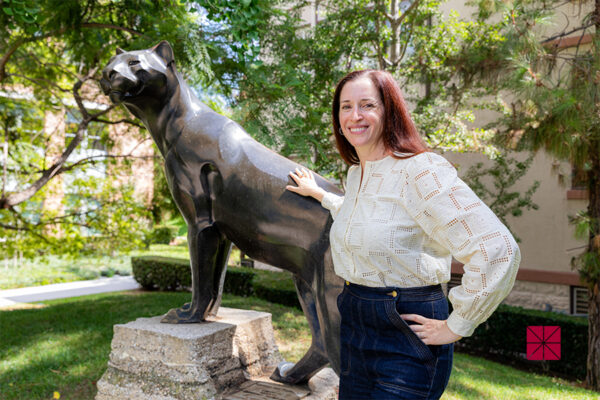If you love surprises, then you would have had a blast at Chapman University’s annual Student Research Day on Wednesday, May 10.
Who knew that just because the label says it’s catfish may not mean it’s so? Or that if you’re running a Gilmore Girls Instagram account, the best day to post news is Wednesday? And having grandparents in the house must help all babies, right?
Think again. And do the research. Which is what more than 170 students did this year to prepare for the annual showcase of student research. Those topics and some unexpected outcomes are just a few of the thought-provoking results presented at the showcase. The surprise element in many of those projects is scholarly serendipity, says Anna Leahy, Ph.D., director of the Office of Undergraduate Research and Creative Activity, which hosts the event.
“What’s especially interesting, when talking with students about their posters, is the ways in which they ended up somewhere they didn’t expect, the ways they used failure as part of the process of succeeding, and how serendipity and curiosity underpin their work,” Leahy says.
Students representing multiple majors from each of the University’s colleges and schools presented a variety of work at the daylong event, ranging from partnerships with faculty-led research and group projects to capstones and independent thesis papers.
One was psychology major Gage Peterson ’17. Growing up he envied his friends whose grandparents lived with their families. He suspected there was a benefit there and decided to check it out using data gathered by Chapman’s Center for Excellence in Biopsychosocial Approaches to Health (CEBAH). He found no benefit in Caucasian infants, but non-Caucasian infants showed a notable benefit was measurable.
“I was surprised,” he says.

Similarly, news and documentary major Brittany Simmons ’20 discovered something about her astoundingly popular Gilmore Girls-themed fan account she runs on Instagram. With 55,000 followers, she has a built in source of data to analyze, an asset her math professor Sandy Lopez Najera encouraged her to use for a research project.
Simmons intuitively knew that activity was slower on the weekends, but hadn’t crunched the numbers. When she investigated fan engagement on her Instagram content, she discovered that her followers were more likely to comment on Wednesdays. Intuitively, she knew it wasn’t the weekend, when she knew social engagement slowed. But Wednesdays?
“I had no clue,” she admits.

The next time you buy catfish at the supermarket or order it from a restaurant menu, consider the findings of food science student Shayna Bosko (MS ’17), one of the graduate students who also participated in the day. In her DNA study of catfish purchased in stores and restaurants, nine percent of the samples were in fact basa, or pangasiidae, a less expensive import that may not always meet USDA safety standards.
“This is important because we want to make sure consumers are getting what they are paying for,” Bosko said.
Another feature of this year’s Research Day was a new schedule that intermingled the disciplines rather than clustering sciences and humanities separately. It was borne partly out of convenience but also with the aim of making the event more interdisciplinary, Leahy says.
“One thing we did differently this year was to allow students to choose the morning or the afternoon session. We hope this allows more students to participate in Student Research Day,” she says. “In addition, the mix of topics and methods represented in the posters creates a more interdisciplinary event and encourages students and their mentors to have cross-disciplinary conversations.”
Learn more about undergraduate research opportunities and funding at the Office of Undergraduate Research and Creative Activity (OURCA).





Add comment